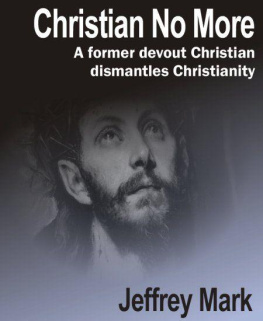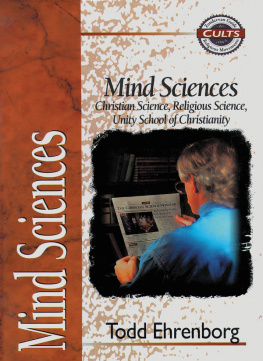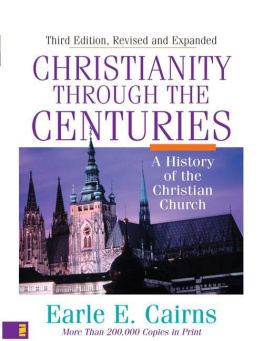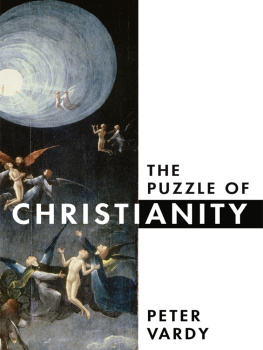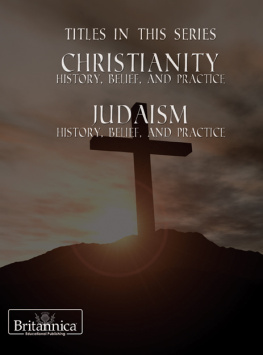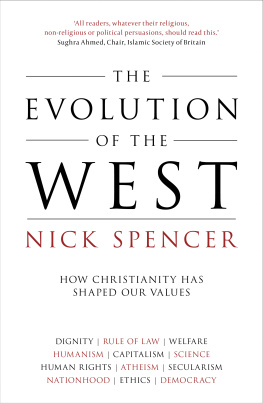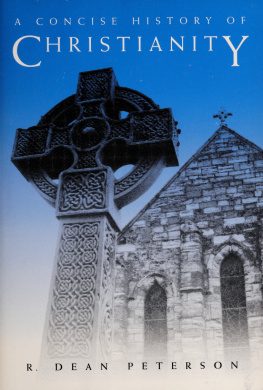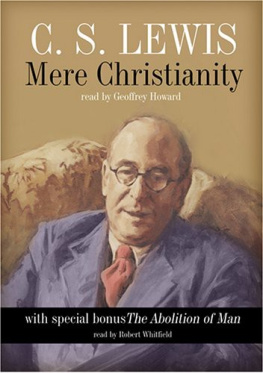Thanks and Introduction
Thanks to all the wonderful people who stayed by my side while I worked through this book, both on paper and in my mind.
Thanks first of all to Angie and Dylan for being here for me.
And thanks to the wonderful people online who offered amazing ideas and insight, including Don Rorabaugh, Lacey Lou, Rita Newton, Chris and Dana, Wendy, Tracy Savagescience, Jen B, Barbara "Lady B", Anna, Christopher Gadfly, Richie McCool and his wife Jen, Brandi and her big family, Dr. W. Sumner Davis, Acharya, John Loftus, David Mills, Izzy, Michael Skowronski, Gyreck, Kwisatz Haderach, ...and so many others; I apologize if I left your name out!
And a big thanks to my editor, Leah Myers for her excellent, meticulous work. Thanks to my proofreader, Amy Page, for her incredibly keen eye in catching the last-minute mistakes.
A note about the quoted Bible verses
For much of this book, I have chosen to quote the King James Version (KJV) of the Bible for two reasons: First, the text is in the public domain. Second, many fundamentalist Christians feel the KJV is the only authentic, inspired Word of God. As such, in tackling the arguments of fundamentalists, I felt it made the most sense to use the version that the fundamentalists prefer.
Occasionally, I have quoted the Youngs Literal Translation of the Bible. This translation was published back in 1862, and consisted of nearly a word-for-word literal translation of the early Hebrew and Greek texts. Its an interesting translation, because the word ordering often duplicates the original text, without adjusting for more sensible English rendering. As a result, the text is a bit stilted. But its useful in that its easy to quickly determine how some people translate particularly unusual words from the early texts. The Youngs Literal Translation, like the KJV, is in the public domain.
I also occasionally make use of the New International Version (NIV) text. This is a modern translation that many fundamentalists criticize due to its supposed lax translation and interpretation. But its an interesting translation in that it allows for an easier, more understandable translation than many of the other translations. However, I typically only use this translation when Im purposely pointing out comparisons between the translations.
The New International Version is not in the public domain. However, the publishers of the version have given express permission for up to a certain number of verses to be quoted in a book. (The permission is described in detail on their web site, http://www.ibs.org/bibles/termsofuse.php.) Thus, all NIV verses reprinted here are done so by permission.
Another translation that I occasionally mention is the Revised Standard Edition (RSV). In Chapter 5, I give a detailed description of why the RSV is particularly shunned by fundamentalist Christians. (And I do not have any quotes from it; I only describe it. So although the publisher of the RSV grants permission, its not necessary here.)
A Note about BC/AD vs BCE/CE
In writing this book, I have deliberately broken skeptic and freethinker tradition by choosing BC and AD to refer to years. Many non-religious people prefer BCE ("Before Common Era") and CE ("Common Era") because such designations remove any religious connotation and are more inclusive, while BC and AD are distinctly of Christian origin. BC stands for Before Christ and AD stands for Anno Domini (which translates to The Year of Our Lord); both are clearly focused on the birth of Jesus.
My reason for using BC and AD is simple: I want this book to be accessible to Christians, including those who are struggling with their faith. Considering the terms BC and AD are far more common and understood, I have chosen to use these two abbreviations.
The Collapsing Tower of Babel
I spent many years of my childhood believing in him. I knew without a single doubt he was real. I would think about him every day as I sensed his presence. I would pray to him. I didnt just know he was hearing me; I felt him hearing me. The feeling that he was there was unmistakable. I would close my eyes, picturing him, and he was there, talking to me, and, more importantly, listening to me. He was guiding me.
He was real.
There was no doubt whatsoever in my mind, because I could feel him out there somewhere. This wasnt just my imagination. This was real. He was there.
I could feel him with my heart and with my soul. And I knew he heard my prayers. I had a personal relationship with him.
He was real.
That isuntil my mother broke the news to me that he wasnt real. She broke the unbelievable news that no, there really was no Santa Claus.
But how could that be? I felt him. He was unmistakably real, absolutely there.
Or was he?
How could I have felt so strongly, so sincerely, so completely and surely that he was there, when he wasnt? This wasnt just a made-up story; this was much deeper. This was a feeling that came from far within me, as if he was a very part of me. He was real.
But he wasnt.
Clearly, there was some bizarre psychological thing going on in my brain that made him real.
And what about Jesus?
He was also real to me.
I remember, at the age of around seven or eight, fantasizing about Jesus showing up at the door to our house. There would be a knock at the door. I would be the one to answer it. I would get to the door, open it, and he was standing right there. I would recognize him, of course, because he looked like the thin, bearded man in the pictures in the museums, and was even dressed in the familiar robe. I would say nothing but would step out and we would both smile and hug. Youre finally here, I would think to myself. After all this time, you came to me just as you promised you would.
~~~~
Even though I was excited at the idea of one day seeing Jesus, I, like so many other Christians, was simultaneously terrified. The church taught that if I did the wrong things and forgot to beg for forgiveness, or if, heaven forbid, I committed the "unforgivable sin," that I would not be allowed to go to Heaven. Instead I would spend eternity burning in Hell.
Yet, I had another favorite daydream when I was a child. I would imagine my family standing among the millions of other families, with Jesus up on a big podium, giving instructions. This, of course, was Judgment Day. He would make the announcement that "All good people please move over to this side." My mother would grab my little sister by the hand and say to the family, "Come on, everyone, thats us."
I was the martyr. I would stand back and say, "No, Mom! Thats not us!"

